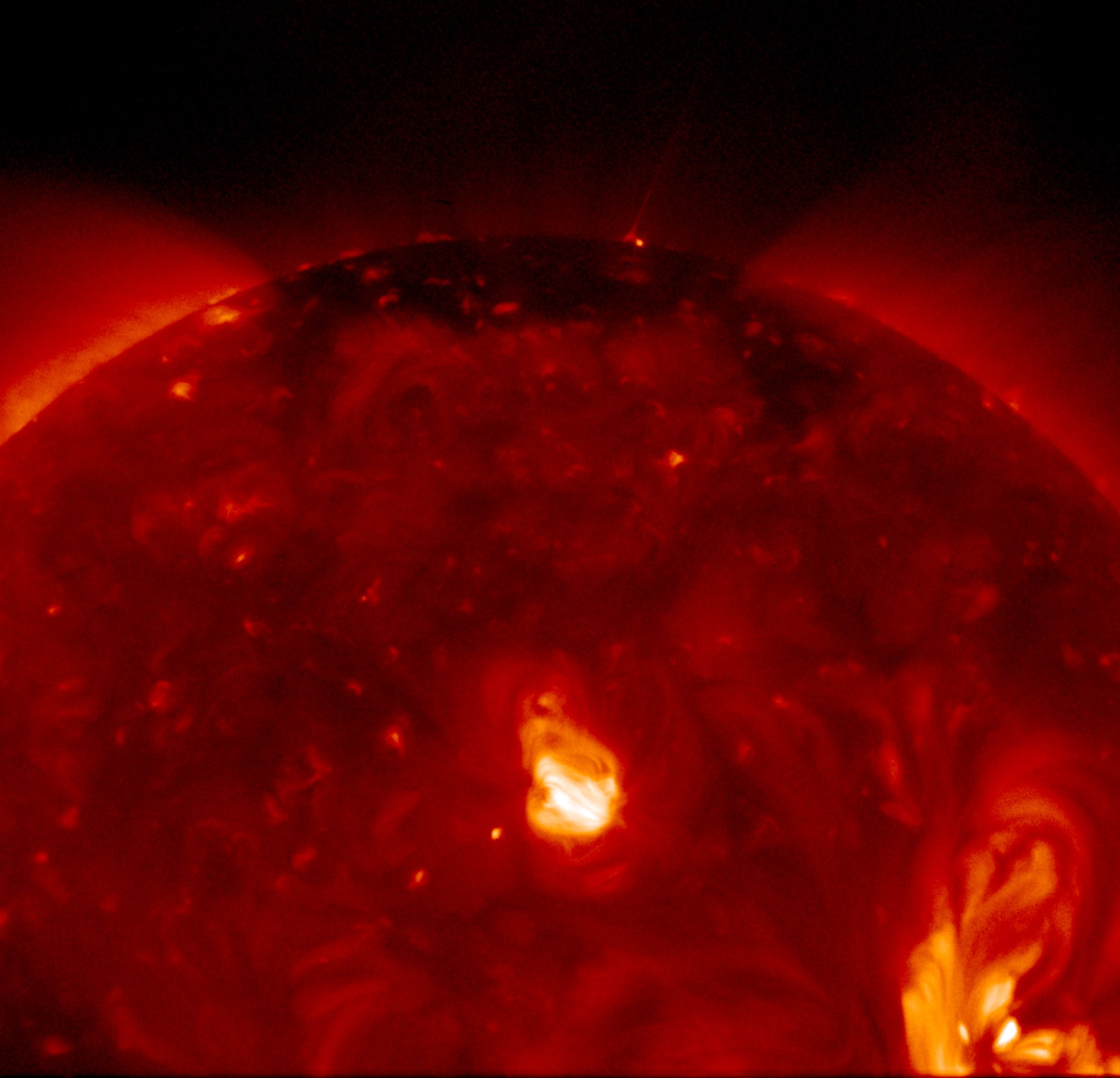The sun, our closest star, is quite an amazing celestial body. Not only is it the heart of and the largest object in our solar system, it’s also essential to life on Earth — it drives our weather patterns, affects our water cycles and circulates our atmosphere. Scientists at NASA’s Marshall Space Flight Center in Huntsville, Alabama, study the sun in great detail daily at the National Space Science Technology Center in an effort to understand how Earth’s most important energy source operates.
“It’s really important for us to understand the star in our backyard,” said Marshall astrophysicist Alphonse Sterling. “It’s our closest laboratory where we can learn more about other stars and the universe.”

Sterling and Marshall astrophysicist Mitzi Adams’ most recent paper, detailing some of their discoveries, was published July 6 in Nature, science’s most highly cited interdisciplinary journal.
At the NSSTC, a research facility and collaborative think tank on the campus of the University of Alabama in Huntsville, Marshall scientists and engineers routinely team with their counterparts in industry and academia to perform cutting-edge research and development in Earth and space sciences.
For their article, Small-Scale Filament Eruptions as the Driver of Solar Coronal Hole X-ray Jets, Adams and Sterling teamed with UAH Research Scientists Ronald Moore and David Falconer.
Using data from the Hinode satellite, a NASA and Japanese Aerospace Exploration Agency joint mission, and the Solar Dynamics Observatory, the first mission of NASA’s Living With a Star Program, the team studied solar X-ray jets in the coronal holes of the sun. Solar X-ray jets are explosions that erupt from the sun’s surface, expelling hot gas into the corona, the sun’s outer atmosphere.
“These jets are very significant,” said Sterling. “They could help us explain one of the long-standing mysteries of astrophysics — the heating of the sun’s corona.”
The internal temperature of the sun can reach nearly 15,000,000 degrees Celsius. As you move outward, the temperature drops. At the photosphere, or the sun’s visible surface, the temperature is only 6,000 C. However, the corona can reach temperatures greater than 1,000,000 C.
“It’s really intriguing,” said Adams. “It’s like moving away from a fire and getting hotter. These jets could help explain the superheating.”
The team chose to examine jets in the solar coronal holes where the jets are more easily observed and occur an average of 60 times a day. The coronal holes also have a relatively simple magnetic geometry making the jets easier to study.
As Sterling, Adams and their teammates examined these jets, they noticed the generally accepted theory of how jets were created didn’t accurately explain what was occurring. The long-standing theory, the Emerging-Flux Model, explained that new flux coming up to the photosphere and its interaction with the photosphere’s complex magnetic topology created the jets.
“We were looking everywhere to find this flux emerging,” said Adams, in regards to an earlier study that set the stage for their current work. “Farther and farther back in time, we sifted through hours and hours of data searching for magnetic signatures, emergences that occurred at the right location to fit the model.”
No matter where she looked, Adams couldn’t find evidence of the emerging flux. Sharing her frustrations with Sterling, who has spent years working with filament eruptions, they began to find similarities with his previous work.
“After we finally realized what we were looking at, it became clear,” said Sterling. “These jets were being caused by filament eruptions — very small, scaled down filament eruptions.”
A filament is a structure in the corona consisting of cool plasma supported by magnetic fields. Filaments can be very, very large — more than 68,000 miles long, or 8.5 times longer than Earth’s diameter — and appear as long threads stemming from the photosphere, suspended in the corona, similar to a loose stitch on a baseball.
Changes in magnetic fields around filaments can cause them to erupt and result in solar flares and coronal mass ejections (CMEs). CMEs can enhance the flow of the solar wind, affecting our planet’s magnetic field and causing geomagnetic storms. In Earth’s magnetic field, such disturbances can energize spectacular auroras, cause communications interference and induce overloads in electrical power grids and equipment.
The team believes the small-scale filaments were hidden in earlier studies. Just like in larger filaments, the plasma of the smaller filament is significantly cooler than the corresponding eruption. Earlier satellites recording the eruptions could not separate the two occurrences, essentially hiding the filament. Advances in technology with the Hinode and SDO made it possible to separate the filament from the eruption by observing the event at different wavelengths.
For the paper, they examined 20 coronal-hole solar X-ray jets occurring on the solar limb, or the sun’s edge. With the profile view on the limb, the team was able to clearly see the small-scale filaments. These “smaller” filaments are, on average, almost 5,000 miles in length, roughly the distance from New York to Hawaii.
“The important thing we learned in our observations is that things scale down,” said Adams. “As technology advances and we are allowed to see things in greater detail, we continue to learn more.”
Scientists first began X-ray observations of the sun on Skylab, America’s first space station, in the 1970s. “It took that wavelength to discover the new things we are seeing now. We keep making better and better observations at finer and finer scales, and as technology advances this will continue.”
“The observations of these jets involve stellar magnetic fields, plasmas and their interactions,” said Sterling. “These interactions are taking place all over our universe, and it is important for us to understand how these events, from the smallest to the largest, can affect us in our solar system and on Earth.”
To read the team’s article in Nature (subscription required), visit:
http://www.nature.com/nature/journal/vaop/ncurrent/full/nature14556.html
For more information about the National Space Science Technology Center, visit:
https://www.nasa.gov/centers/marshall/scienceandtechnology/nsstc.html
For more information about NASA’s Marshall Space Flight Center, visit:























